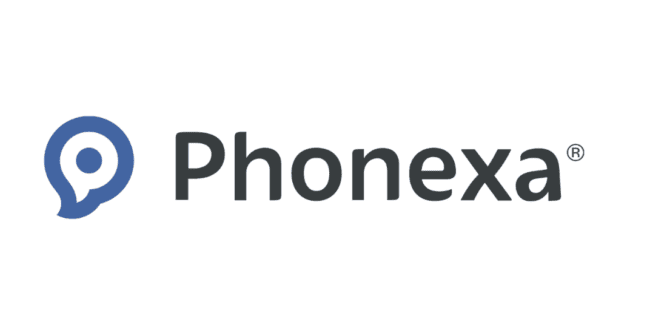How to Improve your Content Marketing Strategy

Beyond Basics: Transforming Your Content Marketing Strategy for Today’s Digital Battlefield
In an era where attention is the ultimate currency, yesterday’s content marketing playbook won’t cut it anymore. The digital landscape has evolved from a spacious frontier into a crowded battleground where brands compete ruthlessly for every scroll, click, and second of engagement. While 91% of businesses use content marketing, only 9% rate their efforts as “very successful.” The gap between participation and excellence has never been wider.
So how do you cross this chasm? How do you transform your content strategy from merely present to genuinely powerful? Let’s cut through the noise and explore actionable strategies that separate content leaders from the pack.
Audience Intelligence: Move Beyond Basic Demographics
The advice to “define your audience” is as old as marketing itself—and just as incomplete. Today’s winning strategies require moving beyond simple demographic profiles to develop true audience intelligence.
What to do now:
- Create behavioral personas: Rather than just age and location, map your audience’s digital behavior patterns—which platforms they trust for different types of decisions, what content formats they consume at different stages of their journey, and how their consumption habits change throughout their day.
- Establish a direct feedback loop: Launch micro-surveys, monitor comments religiously, and create exclusive communities (whether Discord servers, private Slack channels, or subscriber-only newsletters) where your most engaged users can provide real-time input on content needs.
- Analyse content consumption patterns: Use tools like Hotjar or ContentSquare to see exactly how users interact with your content—where they spend time, where they drop off, and what they skip entirely. This heat-mapping approach reveals truth beyond vanity metrics.
- Mine search intent data: Tools like AnswerThePublic, BuzzSumo, and even Google’s “People Also Ask” sections provide invaluable insights into the specific questions your audience is asking—and the language they use to ask them.
Content Quality: The Differentiation Imperative
“Produce high-quality content” might be the most meaningless advice in marketing—not because it’s wrong, but because it lacks specificity in an age where quality standards continuously evolve. Today’s content quality is measured not just by polish, but by differentiation.
What to do now:
- Conduct a uniqueness audit: Evaluate your last 10 content pieces against your top 3 competitors’ similar content. If more than 70% of your information overlaps, you’re creating commodity content. Identify the 30% that’s truly unique and double down on those differentiating insights.
- Embrace the “one fresh angle” rule: Each piece of content should contain at least one insight, angle, or perspective that cannot be found in competing content. This could be proprietary data, unique expert interviews, or counter-intuitive positions backed by solid reasoning.
- Upgrade production values selectively: Rather than trying to make every piece cinematic, strategically invest in upgrading production value for cornerstone content that represents your brand’s thought leadership. This creates perception anchors that elevate your entire content ecosystem.
- Systematise subject matter expert input: Create formalised processes to extract insights from your organisation’s top minds, even when they’re time-constrained. Consider quarterly insight extraction sessions, structured Q&As, or even recorded conversations that content teams can mine for unique perspectives.
Distribution Strategy: Beyond Basic Amplification
The concept of “content amplification” has become dangerously oversimplified. Posting across multiple channels isn’t a strategy—it’s a baseline expectation. Modern distribution requires precision, not just presence. (p.s see our Guide on Native Advertising to Amplify Your Content)
What to do now:
- Develop channel-specific content adaptation guidelines: Each platform has its own content metabolism. Create specific transformation rules for how a core piece changes when adapted for LinkedIn versus TikTok versus your email newsletter.
- Build a two-tiered promotion system: Distinguish between lightweight daily promotion and concentrated campaign-style pushes for cornerstone content. Your best content deserves multiple distribution waves over extended periods.
- Create strategic syndication partnerships: Instead of generic guest posting, identify 3-5 complementary but non-competing brands or publications that reach your ideal audience. Develop formalised content sharing arrangements that benefit both parties.
- Implement a “second life” content calendar: Systematically resurface your highest-performing evergreen content every 3-6 months with fresh angles, updated data, or new contextual frames that make it relevant again.
Competitive Intelligence: From Analysis to Anticipation
Basic competitor analysis has become table stakes. The real advantage comes from developing predictive competitive intelligence that helps you see where the content landscape is heading, not just where it stands.
What to do now:
- Track content investment patterns: Monitor not just what competitors are publishing but where they’re investing most heavily—which topics get their best writers, highest production values, and most promotional support. This reveals their strategic priorities.
- Identify coverage gaps and saturation points: Map the collective content output of your category’s top 10 players to find both underserved topics (immediate opportunities) and oversaturated areas (where differentiation will require exceptional execution).
- Analyse response rates and engagement patterns: Determine which competitor content triggers the most meaningful audience engagement and response. This reveals not just what topics matter, but which specific content approaches resonate most deeply.
- Create a competitive content dashboard: Build a living document updated monthly that tracks not just what competitors are creating, but how their strategy is evolving—which channels they’re abandoning or doubling down on, how their messaging is shifting, and where they seem to be gaining or losing traction.
Measurement: Beyond Vanity Metrics
The final frontier of content marketing excellence is measurement that actually matters. Impressions, page views, and even basic engagement metrics fail to capture the true business impact of content marketing.
What to do now:
- Implement content attribution modeling: Use tools like Google Analytics 4 or dedicated attribution platforms to understand content’s role in your overall conversion paths. Which pieces serve as first-touch awareness builders? Which function as conversion tipping points?
- Establish content efficiency metrics: Measure not just content performance but content economics—the resources required to create specific types of content compared to their business outcomes. This reveals your true high-ROI content types.
- Create a multi-tiered KPI framework: Different content serves different purposes. Develop specific success metrics for awareness content, engagement content, conversion content, and retention content rather than judging all by the same standards.
- Connect content metrics to business outcomes: Perhaps most importantly, establish clear connections between content performance indicators and actual business results. This might mean tracking how content engagement correlates with sales cycle length, customer lifetime value, or retention rates.
The Path Forward
Content marketing has reached a maturity inflection point. Brands that continue with basic strategies will find themselves increasingly invisible, while those who evolve toward more sophisticated approaches will capture disproportionate returns.
The good news? Most of your competitors are still stuck in content marketing 1.0—publishing regular but unremarkable content, measuring superficial metrics, and wondering why their results plateau. By implementing even a handful of these more advanced approaches, you can create meaningful separation from the pack.
The question isn’t whether your brand needs content marketing—it’s whether your approach to content marketing has evolved to meet the demands of today’s vastly more sophisticated and competitive landscape. Because in the content arena, it’s not the biggest or loudest that win, but the smartest and most adaptive.
What one aspect of your content strategy will you upgrade first?






